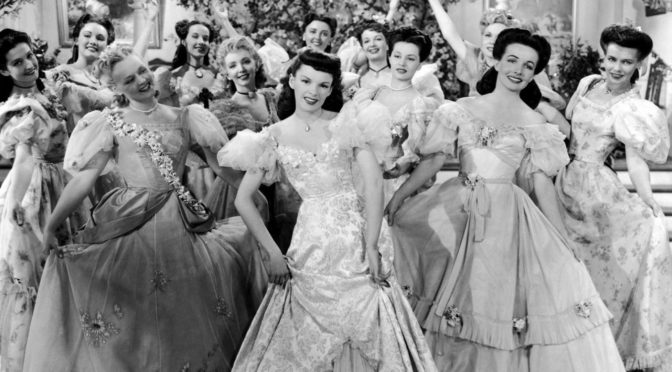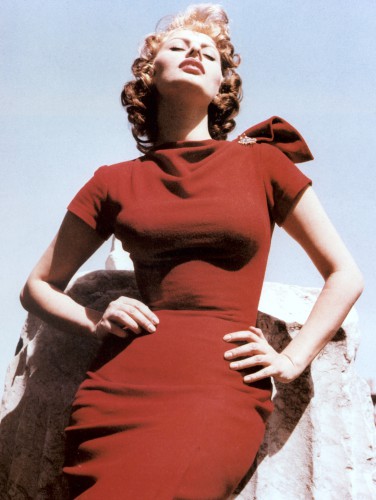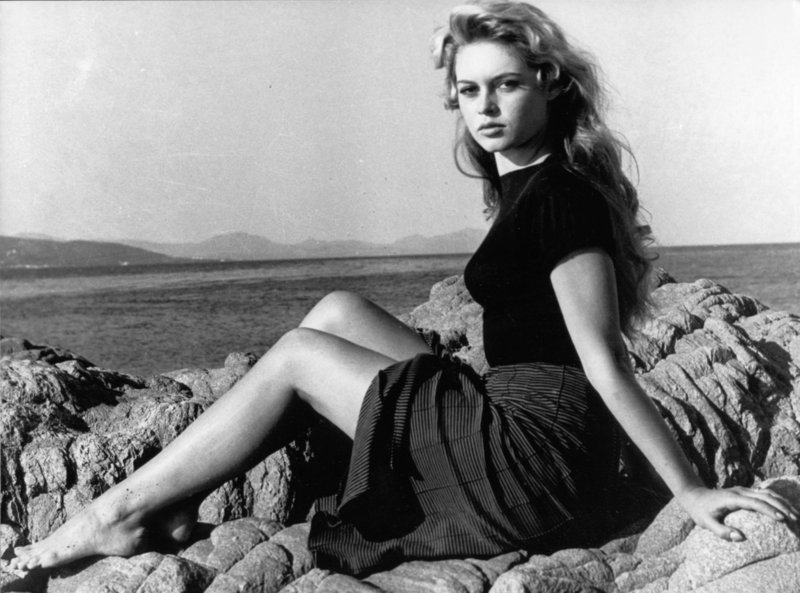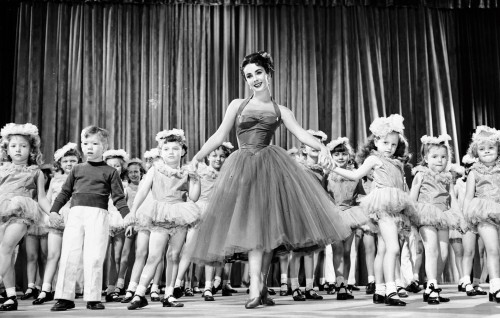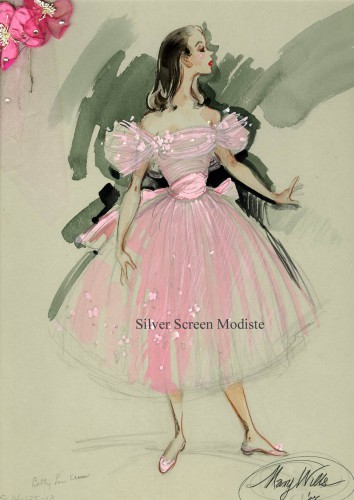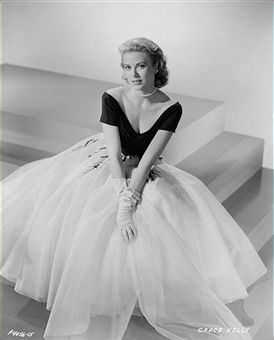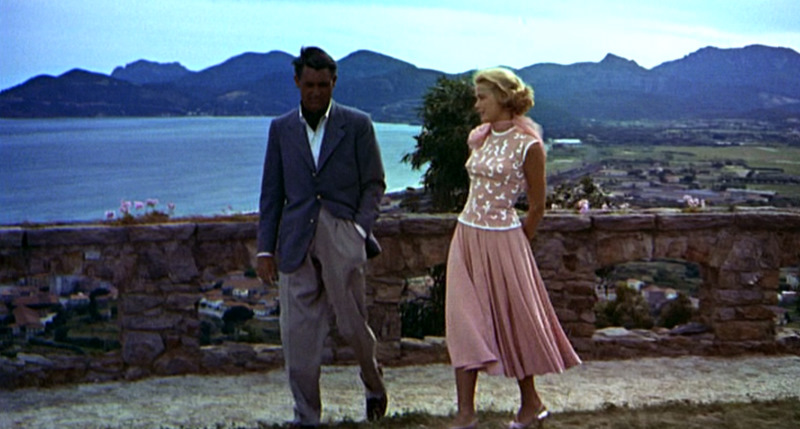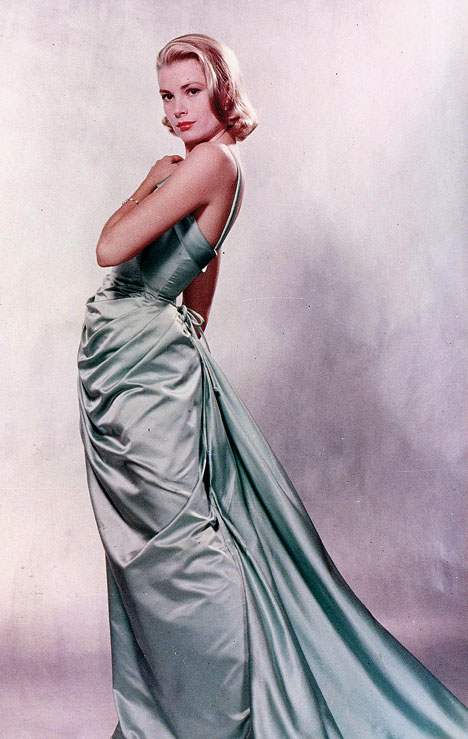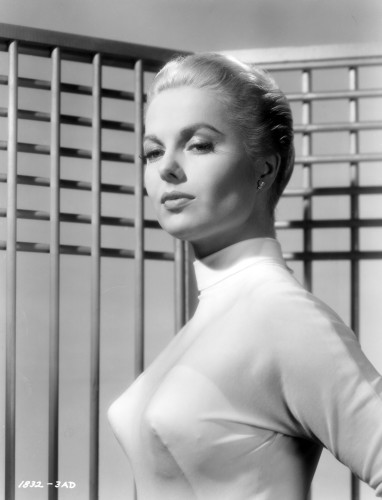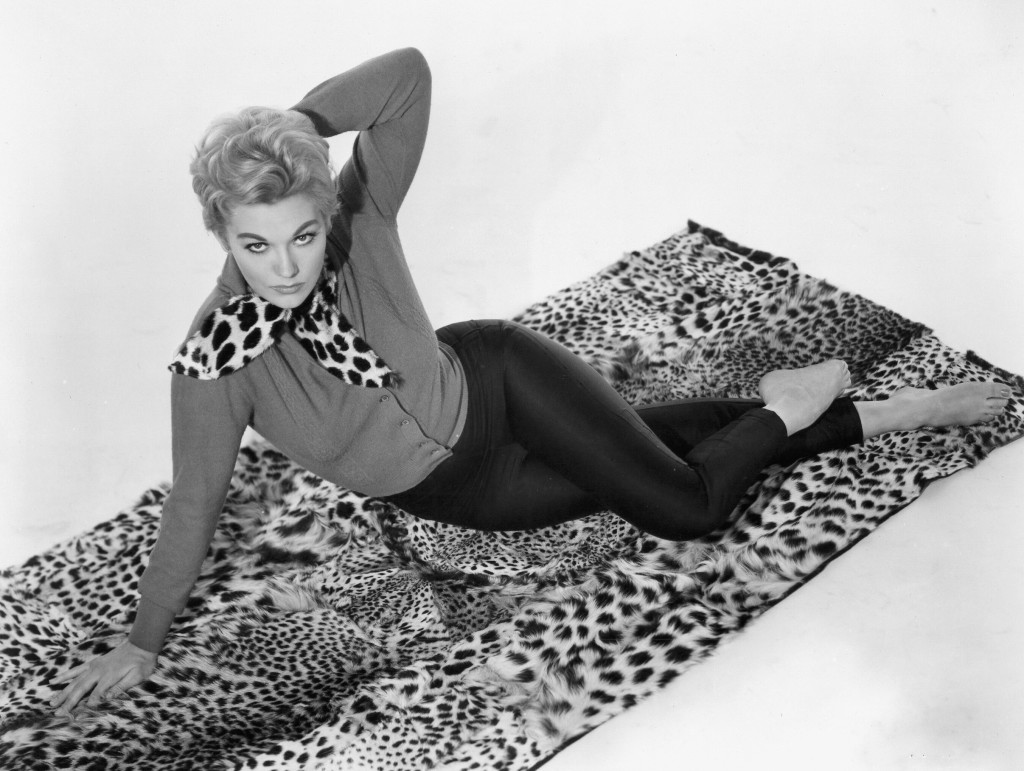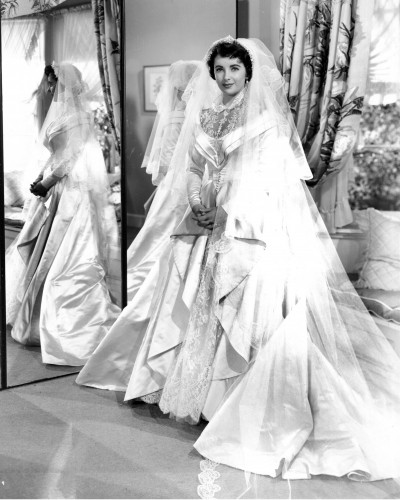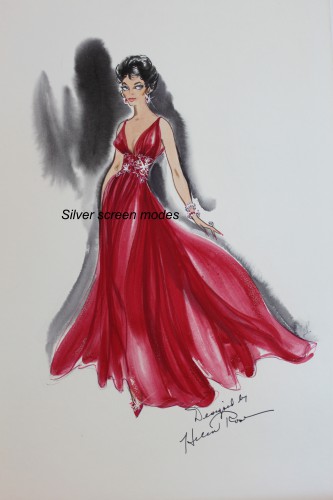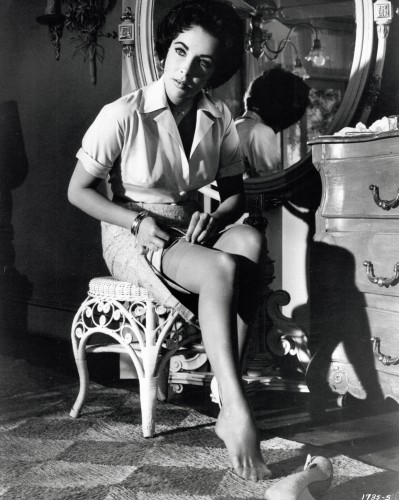When Helen Rose began working at MGM with its roster of stars, mogul Louis B. Mayer told the costume designer to, “Just make them beautiful.” With her plentiful use of chiffon and her figure-flattering style, Helen Rose did just that, designing the costumes for leading ladies including Elizabeth Taylor, Grace Kelly, Ava Gardner, Cyd Charisse, Debbie Reynolds, Lana Turner, Lauren Bacall, Doris Day, Esther Williams, Leslie Caron, and many others.
Helen Rose started at MGM in September 1943 as just one more costume designer among many. World Ward II was raging but the movie business was healthy. Helen got her start designing showgirls in the cabarets and nightclubs of Chicago. She learned early how to make their costumes comfortable and especially t using chiffon for its “twirly” quality for the dancers. After coming to L.A in 1929 she had struggled but finally found jobs working as a costume designer at both 20th Century-Fox and for the Ice Follies. When Mayer found out it was the same person designing the colorful outfits for the Fox musicals and for the fantasies on ice, he had to hire her. Irene Lentz Gibbons was the executive director for designing, not only designing costumes herself but assigning designers to various films. With several designers on staff including Irene Sharaff, Barbara Karinska, Marion Herwood Keyes, and two men’s designers, Helen waited months until she got an assignment. This finally came with the big production of Ziegfeld Follies released in 1945. Helen designed the colorful “Here’s to the Ladies,” number including Lucille Ball’s pink spangled costume. Louis B. Mayer was impressed and Helen’s career was on its upward trajectory.

Helen designed the costumes for Harvey Girls, the big hit of 1946. This was the first of many occasions she would dress Judy Garland. Here the styles were 1880s, with eye-catching clever lapel designs and mutton-chop sleeves. This Americana musical with Judy Garland and an all-star cast is now considered a classic. Helen next designed most of the costumes for a big all-star cast for the musical, Til the Clouds Roll By (1948). The movie was supposed to be a bio-pic about composer Jerome Kern, but instead became a series of musical numbers of his greatest hits. Notable were Helen’s designs for her friend Lena Horne’s blue and lavender gown worn when she sings, “Can’t Help Loving Dat Man.” There was a knock-out midnight blue sequined top and deep-cut fringed skirt for Lucille Bremer’s dance outfit for the “I Won’t Dance” number, and Judy Garland’s yellow feathered skirt and sequined chiffon top in the “Who” (Who Can it Be) number, a question she seems to ask a staircase of chorus boys. Judy Garland, pregnant with Liza at the time, related to Helen, “What a song to sing in my present condition.”

A Date With Judy in 1948 starred Jane Powell and Elizabeth Taylor. Jane Powell was the bigger star at the time, and Elizabeth Taylor was only 16 years old. But Elizabeth stole the show, especially the way Helen Taylor dressed her. Her youthful beauty radiated from the screen, and Helen took advantage of her violet colored eyes in her design fora knock-out evening gown of lavender-colored chiffon with a slight décolleté. With her thick dark hair and bold eyebrows, Elizabeth Taylor became a magnet for the camera. In Helen’s “New Look” fashions she became the fashion icon for teenagers across America. In 1948 Irene launched her own fashion line and stayed on at MGM but would no longer be supervising other designers. She would design for some movies but this opened up opportunities for Helen. Helen’s relationship with Elizabeth would grow with their next collaboration, Father of the Bride. Here Elizabeth stars as the young bride in the family with Spencer Tracy as father, Joan Bennett as the mother, and Don Taylor as the groom. Helen designed 47 costumes for Elizabeth. including a stunning wedding gown. Elizabeth was so impressed she had Helen design her own wedding gown. The gown took 15 seamstresses and beaders three weeks to make. MGM then gave her the dress as a present. The movie was a hit, the box office smash was helped by Elizabeth’s real wedding to Conrad “Nicky” Hilton on May 6, 1950, just before the film’s release.

Just as things seemed to to going so well for Helen, everything turned bad. Helen had sympathized with Judy Garland ever since they first worked together. Judy was just coming back to make Summer Stock after a three month stay at a sanitarium to cure her drug-addiction. While they began working on Judy’s wardrobe Helen was blamed for leaks to the gossip columns blaming MGM for Judy’s problems. Dory Schary had become the MGM Production Head and he took Helen off the movie. Walter Plunkett took over and designed Judy’s costumes and all the other cast members with the exception of Gloria DeHaven’s costumes. Judy was next scheduled to make Royal Wedding with Fred Astaire after June Allyson became pregnant. This got off to a rocky start but Helen started designing costumes for Judy. After getting into one of Helen’s costumes Judy had a run-in with Arthur Freed. She left the studio and didn’t return, having gotten a notice of suspension in the mail. The “Get Happy” number from Summer Stock ended up as Judy’s last MGM scene after thirteen years with the studio. Helen was taken off that film as well.
When Irene left MGM to devote herself full-time to her design business: Irene LTD., MGM found itself in need of another regular designer other than Walter Plunkett. Despite Helen having been in the dog house over the Judy Garland issue, she had gotten great publicity for her designs for Elizabeth Taylor. So she was back to designing for Elizabeth Taylor and Esther Williams at MGM through 1951, She did complete Royal Wedding with Jane Powell in the lead, playing as Fred Astaire’s partner. Jorjett Strumme, who became a friend of Helen’s and modeled for her fashion shows, noted her extraordinary sense and use of color. One of the examples she pointed out was Jane Powell’s lavender dress and coral belt worn in the dance scene with Fred Astaire on the ship going to England. She also notes Helen’s clever use of gradations of the same color in other costumes, “The petticoat would be purple and every layer on top of it would get lighter so that the body of the dress was lavender.”
Nineteen fifty-two turned out to be a very big year for Helen. She started out designing a big turn-of-the-19th century costume movie, The Belle of New York, starring Fred Astaire and Vera-Ellen. Helen also designed the remake of The Merry Widow, starring Lana Turner and Fernando Lamas, using both black and cream-colored gowns that earned her a Best Costume Oscar nomination. She also designed Elizabeth Taylor’s costumes for Love is Better Than Ever, and for Esther Williams in Million Dollar Mermaid. Helen finished off the year by designing another wardrobe for Lana Turner, this one for The Bad and the Beautiful. Helen was nominated for another Oscar for Best Costume (black & white film), and won the award for this movie. Her friend Elizabeth Taylor was the category presenter that year and handed a stunned Helen Rose the statuette.



Helen Rose won her Academy Award Oscar in March of 1953. She would get another great prize that year when she designed the costumes for Mogambo, and for the first time for the fabulous Grace Kelly. She also dressed the beautiful Ava Gardner in the same film, a remake of MGM’s Red Dust. Clark Gable starred in both films. Mogambo was set in Africa involving safaris. Helen Rose designed flattering khaki bush outfits for Grace Kelly that have influenced modern fashion for decades. Helen liked to emphasize figures so for Ava Gardner she designed tightly belted skirts and pants that flattered Ava’s gorgeous figure, and the yellow, dusty rose, and green colors that set off her beautiful skin. Not a bad wardrobe for the bush. The Clark Gable and Ava Gardner characters end up romantically linked in the movie, but it was Gable and Kelly that had the affair on set.


Nineteen fifty-four was another great year for Helen Rose. Including another Academy Award. I’ll cover the rest of her MGM career in Part II of my blog post coming soon.
Christian Esquevin
Views: 1224

